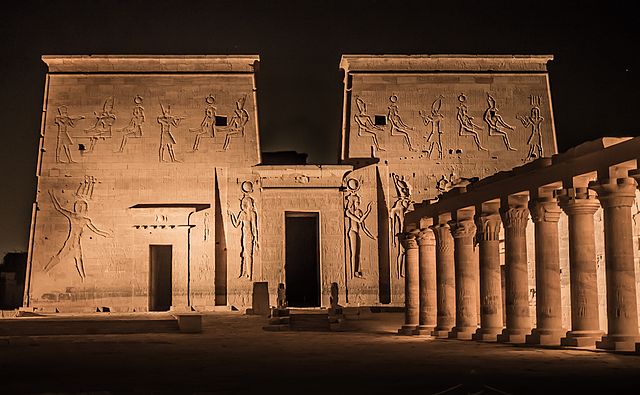Egyptian Revival architecture
Egyptian Revival is an architectural style that uses the motifs and imagery of ancient Egypt. It is attributed generally to the public awareness of ancient Egyptian monuments generated by Napoleon's conquest of Egypt and Admiral Nelson's defeat of the French Navy at the Battle of the Nile in 1798. Napoleon took a scientific expedition with him to Egypt. Publication of the expedition's work, the Description de l'Égypte, began in 1809 and was published as a series through 1826. The size and monumentality of the façades discovered during his adventure cemented the hold of Egyptian aesthetics on the Parisian elite. However, works of art and architecture in the Egyptian style had been made or built occasionally on the European continent since the time of the Renaissance.
Image: Egyptian Hall, Piccadilly Shepherd, Metropolitan Improvements (1828), p 295 (edited)
Image: Neues Museum Aegyptischer Hof
Image: 2043 05370 De Grote Tempel van de vrijmetselaarsloge Les Amis Philanthropes
Image: Egyptian Theatre on Main St, Delta, Colorado
Ancient Egyptian architecture
Spanning over three thousand years, ancient Egypt was not one stable civilization but in constant change and upheaval, commonly split into periods by historians. Likewise, ancient Egyptian architecture is not one style, but a set of styles differing over time but with some commonalities.
Image: Kheops Pyramid
Image: Hypostyle column in the Temple of Amun panoramio
Image: Philae temple at night
The well preserved first pylon at the Temple of Isis in Philae, serving as a monumental gateway to the temple complex








